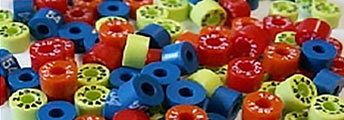The Role of Circuit Board Drills in PCB Manufacturing
How micro drill bits separate functional technology from expensive scrap.
Pick up your phone right now. Go ahead, I'll wait.
That slim device contains a printed circuit board with hundreds, maybe thousands of tiny holes drilled with tolerances most people can't even imagine. Each hole had to be perfect—not pretty good, not close enough. Perfect. Because in PCB manufacturing, circuit board drills aren't just tools. They're the gatekeepers between functional technology and expensive scrap metal.
Let me explain why these micro drill bits matter more than you'd think.
Why Every Hole Counts?
PCB manufacturing is unforgiving. You're working with multilayer boards where a single misaligned hole can trash the entire board. These holes aren't just empty spaces but vias connecting different layers, mounting points for components, or pathways for electrical signals. One hole drilled at the wrong angle or depth? That board's done.
The numbers we work with at Midwest Circuit Technology would make most machinists nervous. We're talking micro drill bits starting at .0014 inches. That's thinner than a human hair. Circuit board drills need to punch through layers of copper and fiberglass at speeds reaching hundreds of thousands of RPM. The bit has to maintain its geometry through hundreds or thousands of holes. It can't wander, can't flex, and it can't generate too much heat. Oh, and it needs to leave clean hole walls because those will be plated later to create electrical connections.
The Technical Reality Nobody Talks About
Most people assume drilling is the simple part of PCB manufacturing. Etching copper traces or applying solder mask seems complicated—but drilling? Turns out, incredibly hard.
Circuit board drills face challenges regular drill bits never encounter. Fiberglass is abrasive and copper is soft and grabby. The combination wants to either snap your micro drill bits or pull them off course. Stack multiple boards for production drilling, and you're dealing with entry and exit materials too—each adds its own complications.
Temperature becomes your enemy fast. At production speeds, friction generates serious heat. Too much heat degrades the fiberglass, causes copper to smear, and kills drill bit life. But slow down too much, and you're looking at productivity losses that eat your profit margins.
Then there's chip evacuation. With holes this small, getting debris out becomes critical. Leave chips in the hole, and they'll scratch the walls, mess with plating adhesion, or worse—break your next drill bit. Proper pecking cycles and vacuum systems aren't optional extras; they're survival equipment.
Materials Science Meets Practical Application
The evolution of micro drill bits mirrors the evolution of electronics. Twenty years ago, a .020" hole was small. Today we routinely drill .004" or smaller. Modern carbide drills are engineered at the grain level for specific properties. We stock solid carbide drills with 1/8" shanks and 1.50" overall length because nothing else can maintain the required stiffness at these diameters.
Drill geometry has been refined through countless test holes—point angles tuned for different materials, flute designs optimized for micro-scale chip evacuation, and coatings that reduce friction without harming hole quality.
But the right drill is only half the equation. You need the right parameters too: spindle speed, feed rate, peck depth, retract height—each affects hole quality. Run too aggressive, and you're breaking bits; too conservative and you're losing productivity.
Real-World Impact
I've seen companies switch drill suppliers to save a few cents per bit. Six months later they call us because their scrap rates tripled. They saved on tool cost but lost far more in rejected boards, broken bits, and machine downtime.
Quality micro drill bits maintain cutting geometry longer and break predictably when worn, not randomly mid-run. They handle heat better, evacuate chips efficiently, and produce consistent holes—resulting in fewer rejects and more predictable production.
For prototype shops, reliable drills mean meeting deadlines. For high-volume manufacturers, they mean predictable costs and quality. For aerospace or medical fields, they mean maintaining certifications and avoiding recalls. Quality matters at every scale.
Looking Forward
PCB manufacturing keeps pushing boundaries—boards get denser, holes get smaller, tolerances tighter. The micro drill bits that seemed impossibly small five years ago are standard today. Tomorrow we'll probably be drilling holes you'd need a microscope to see.
But the fundamentals remain constant: quality tools applied properly produce quality results. Understanding your circuit board drills—their capabilities, limitations, and proper application— makes the difference between smooth production and constant firefighting.
